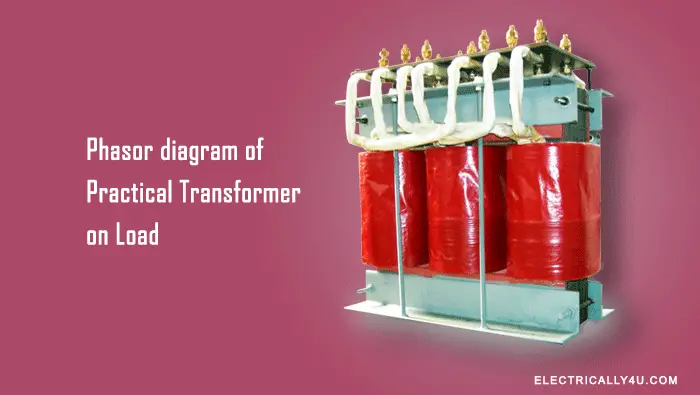Characteristics of DC motor

The performance and behavior of a DC motor is determined from its characteristics. It expresses the relation between two or more quantities. The important characteristics of DC motor are
- Torque – Armature current characteristics(T/Ia) – Also called as electrical characteristics. It gives the relation between torque developed in the armature and current flowing through the armature.
- Speed – Armature current characteristics(N/Ia) – It is also called as speed characteristics, which gives the relation between armature current and speed of rotation of the motor.
- Torque – Speed characteristics(N/T) – It gives the relation between torque and speed of the motor, hence called as mechanical characteritics.
Characteristics of DC Series motor
Torque – Armature current characteristics
As the field winding is connected in series with the armature winding(φ α Ia), an increase in field flux will increase the armature current.
The torque equation for DC motor is given by, T α φIa
At light load, the armature current will be less, and so the flux produced will be proportional to the armature current (φ α Ia). Hence the torque increases as the square of the current (T α Ia2). This relation gives a parabolic curve up to the saturation point.
After the saturation, the magnetic flux will be independent of the armature current. From this point of time, torque will be proportional to the armature current(T α Ia). Now the obtained curve will be a straight line. It is shown in the figure below.

The shaft torque or useful torque(red color dotted line) will be less than the armature torque. It is because of the loss due to iron, friction and windage losses.
From the characteristics, it can be understood that the torque exerted by the motor is proportional to the square of the current, until saturation. It implies that the DC series motor has a high starting current.
Hence the series motor is used where high starting torque is required as in hoists, electric traction, trolleys, etc.
Speed- Armature current characteristics
From the speed equation of a DC motor(N α Eb/φ), it is clear that speed is proportional to back emf and inversely proportional to the flux.
With the increase in armature current, the voltage drop due to armature and series field resistance increases(Eb = V – Ia(Ra + Rse)). Therefore, the back emf decreases. Since the drop is quite small, it can be neglected. So speed is inversely proportional to the flux.

When a heavy load is given to the motor, the armature current will be high which increases the flux. It will result in a reduced speed of the motor. When the load is reduced or no load is given, the flux will be less but the speed will be dangerously high.
Hence, a series motor should never be started without some mechanical load on it. If the motor is started without load, the motor gets damaged due to the high centrifugal force produced at the speed of rotation.
Torque – Speed characteristics
It is drawn between the torque and speed of rotation of a DC Motor. The obtained curve clearly shows that the speed drops when the load torque is increased. At higher loads, the speed drops linearly.
Hence series motors are used for applications where the motor is directly connected to the load.

Characteristics of DC Shunt motor
Torque – Armature current characteristics
We have the torque equation of a DC shunt motor as, T α φIa. Since in the case of DC shunt motor, the flux per pole is considered to be constant. Hence Torque is proportional to the armature current.
With the increase in armature load current, the torque increases, which gives a linear relationship. The obtained characteristic is a straight line passing through the origin O.

Speed- Armature current characteristics
For the shunt motor, the flux is considered to be constant. Hence the speed equation becomes, N α Eb. Practically, Eb is constant, and therefore speed is also constant.
However, when the load current is increased, both the back emf and flux per pole decreases. Comparatively, back emf decreases more than the flux, and hence there will be a small drop in speed, as shown below.

Generally, a shunt motor is called a constant speed motor, as there is no appreciable change in the motor speed from no load to full load.
Due to its characteristics, the DC shunt motor is used for applications such as machining tools, lathes, wood-working machines, etc..
Torque – Speed characteristics
The torque-speed characteristics of the DC shunt motor are drawn from the above two characteristics.

Characteristics of DC Compound motor
Compound motors have both series field winding and shunt field winding. Based on the excitation, they are of two types, namely cumulatively compound and differentially compound motors.
Cumulative compound motors
If the series field flux assists the shunt field flux, then it is a cumulatively compound motor. Such machines have the characteristics of both series motor and shunt motor.
They are used in applications where the load is likely to be removed totally. Due to the shunt field windings, the speed will not become excessively high. At the same time, the series field windings will be able to take up heavy loads.
Cumulative compound motors are used for high starting torque applications as in cranes, elevators, etc. Also used for applications where sudden apply and removal of loads are essential.

Differantial compound motors
In this machine, the flux produced by the series field winding opposes and reduces the flux produced by the shunt field winding. Hence the net flux decreases with an increase in load.
As a result, the motor speed increases(N α Eb/φ). This causes the motor torque to reduce which makes the differential compound motor not suitable to operate for overload conditions. Such motors are rarely employed in practice.
Characteristics of Separately excited DC motor
The operating characteristics of separately excited DC motor is similar to that of the characteristics of DC shunt motor.






